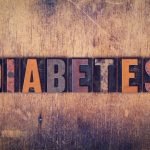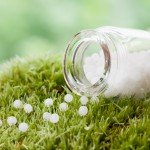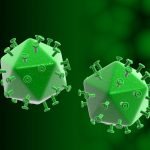Influenza Treatment Using Intravenous Micronutrient Therapy (IVMT)
Virginia Osborne, ND
Brian Carter, ND
When attempting to prevent a viral outbreak through vaccination, public health officials typically target groups most likely to be affected by influenza. Children and the aging population ? The two groups most susceptible to the adverse effects of vaccines. The Centers for Disease Control and Prevention states that there is currently no commercially available vaccine to protect humans against the bird flu virus that is being seen in Asia and Europe.
The CDC also admits that the risk from bird flu is low to most people because the viruses occur mainly among birds and do not generally infect humans. In rare cases, limited human-to-human spread of Influenza A (H5N1) virus has occurred, but transmission has not been observed to continue beyond one person.1 Two Washington, D. C. based non-profit consumer groups, Foundation for Health Choice and Citizens for Health, are concerned that any new vaccines developed can be expected to kill a certain number of children and older adults and substantially harm many others.2-3 Most lay people are not aware that vaccines contain ingredients that typically increase human disease and death. These include toxic elements and chemicals such as mercury, aluminum, formaldehyde, MSG, foreign genetic material, and proteins from various species of bacteria, viruses, and animals that have been scientifically associated with triggering autoimmune disorders and certain cancers.4-5
The political and sociological climate currently surrounding viral illnesses and, influenzas in particular, is in a morass of questionable informational integrity. Where is a physician charged with helping people make informed medical decisions to place his trust? Author Leonard G. Horowitz, DMD, MPH wrote an article in the spring of 2003 discussing Severe Acute Respiratory Syndrome (SARS) and the H5N1 avian flu strain that raises questions regarding where these diseases originated from. He also reiterates the risk of vaccine-injury, because of the extensive list of newly developed vaccinations, highly touted when brought to market, that caused adverse reactions. His list includes the first swine flu vaccine, polio vaccines, smallpox vaccine, anthrax vaccine, hepatitis B vaccine, and more recently Lyme disease vaccine that injured approximately 750,000 people within months of its release prior to its recall by the FDA.6
Dr. Sherri Tenpenny is an osteopathic physician who has researched vaccine safety and the popularly held perceptions regarding viral illnesses such as smallpox. She states, “Nearly every article or news headliner regarding smallpox is designed to instill and continually reinforce fear in the minds of the general public. Apparently the goal is to make everyone demand the vaccine as soon as it is available and/or in the event of an outbreak.” The same statements could be said concerning the bird flu. Perhaps the best approach to take with patients is that put forth by Dr. Tenpenny: avoid fear, seek alternatives to mandated vaccination, avoid being injected with experimental drugs, resist efforts to take away personal rights, take personal responsibility for your health and the health of your family.7
The Naturopathic Approach to Flu Prevention and Treatment
The responsibility for good health lies with both the doctor and the patient. The occurrence and severity of influenza depends on the general health of the patient, the terrain, as it is sometimes known, avoidance activities such as hand washing before touching the eyes and mouth, and preparedness to act with the onset of first symptoms. The patient should have a home flu treatment kit on hand, as immediate action upon noting symptoms can often abort the infection altogether. This kit should be recommended by the doctor and can include the following:
- Homeopathic remedies such as Eupatorium perfoliatum, Gelsemium, Oscillococcinum or other broad spectrum flu remedies
- Sambucus nigra (Elderberry) extract (i.e., Sambucol, one of the earliest extracts developed).8 Often combination products will contain other useful antiviral herbs or nutrients.
- Vitamin C – can be used to bowel tolerance
Clinical experience has shown that frequent dosing of these products is necessary to obtain desired results (i.e., hourly), with decreasing frequency as symptoms improve. The same oral products used at the onset of illness can be used as needed through the progression of the disease. Other actions favored by the treating physician can be instituted as well, such as hydrotherapy, enemas/colon therapy, sweating, dietary changes, mild exercise, and increased water intake.
Intravenous Micronutrient Therapy (IVMT) for Viral Illness
As the name indicates, IVMT is the administration of high doses of micronutrients (vitamins and minerals) intravenously. A person can take these substances by mouth, but the levels absorbed into the cells are limited by how much of the substances are absorbed through the gut. When given intravenously, the serum concentration of these micronutrients reaches levels far beyond what is possible by taking them orally, and the subsequent high serum level of the substances allows greater quantities into the cells.
There are specific categories of patients who can benefit most from IVMT during the flu season. The first group are people over 50 years of age who develop nutrient absorption difficulties secondary to the aging process. Hydrochloric acid secretion at age 50 years is approximately 50% that of a person who is 20 years old.9 Hypochlorhydria usually affects mineral absorption more than vitamins, so the minerals associated with healthy immunity, such as zinc, selenium, and magnesium, may be deficient.
The second group of patients that benefits are those who are infected and who exhibit varying degrees of symptom severity. In this case, even with good oral absorption, the amount of antiviral medication may not be sufficient to effect a resolution of the illness. Illness decreases available energy, including that required for active transport of nutrients required to overcome the malady. IVMT can achieve levels of nutrients in the circulation that can increase passive or osmotic absorption of nutrients into the cells to a level that is virucidal.
The third group are patients with lingering viral illness who cannot bring the illness to a suitable conclusion. They are fatigued, more prone to relapse or reinfection and despite usually effective treatments do not recover. These patients, like the second group, are aided by the high concentration gradient between blood and cells that increases the intracellular amounts of vital energy producing co-factors and antiviral compounds that IVMT can provide.10
Parenteral Products Commonly Used in Antiviral Protocols
Vitamin C: Vitamin C in all its various forms (ascorbic acid, L-ascorbic acid, sodium ascorbate) is perhaps the most available and important of the antiviral nutrients. Frederick Klenner, MD published his first paper on the use of large doses of vitamin C in the treatment of viral diseases in 1948.11 The keys to the successful use of vitamin C are dose and frequency. Dr. Klenner observed good results with up to 200 grams infused over 24 hours. He would often give smaller infusions at intervals until a positive outcome was noted.12 The orthomolecular use of vitamin C should be based on biochemical individuality, as not all patients will need doses at the upper limits of tolerability.13 At higher dosage ranges the sodium ascorbate form is more comfortable for the patient to receive as it has less tendency to sclerose veins; consider the patient’s sodium load sensitivity before using this form.
Vitamin A: Vitamin A for injection must be in a water-soluble form and is commonly available as an emulsion of 50,000 IU/mL. The vial must be mixed well immediately prior to use and the dose is added to the protocol using glass bottles, as plastic bags will adsorb the vitamin A, making it unavailable in the infusion. Vitamin A is an essential micronutrient for immunity, cell differentiation, growth, reproduction, maintenance of epithelial surfaces, and vision.14 In a comprehensive review of the literature, Scrimshaw (1968) concluded, ”No nutritional deficiency is more consistently synergistic with infectious disease than that of vitamin A.”15 The dose for viral diseases ranges from 1-6 mL. Caution must be used in pregnant women.
Selenium (Se): Selenium Trace Element is available at a concentration of 40 mcg/mL and compounded solutions are available from 100 mcg/mL to 400 mcg/mL. A deficiency in selenium can induce a state of oxidative stress in the host, since it is an essential component of glutathione peroxidase, an antioxidant enzyme. Selenium deficiency has been associated with lower resistance to infection with both bacteria and influenza virus. The increased susceptibility to infectious pathogens in selenium deficiency may be due to decreased antibody production and impaired lymphoproliferative responses.16 It has also been found that viruses cause more tissue damage if the host is selenium deficient.17 Typical selenium doses range from 400-1600 mcg.
Zinc: Zinc Trace Element is available in 1 and 5 mg/mL concentrations, typically as a sulfate or chloride salt. While not an antiviral itself, zinc is important for good immune function. Zinc deficiency has been noted to result in an increased susceptibility to infectious diseases. Suboptimal levels of zinc have also led to reduced thymus size and depleted macrophages and lymphocytes in the spleen. Deficient zinc status has also been associated with decreased T-cell function and antibody response. Excess levels of zinc have been reported to be immunosuppressive, causing decreased activities of neutrophil leukocytes, decreased T-cell proliferation, and decreased antibody production.18 Sufficient doses to result in good zinc nutrition without excess are in the range of 5-10 mg per infusion.
Hydrochloric acid (HCl): Sterile pyrogen-free dilute HCl is available from several reputable pharmacies in a 2% or 1:500 solution. Parenteral HCl acts as a non-specific white blood cell (WBC) stimulant, and increases the WBC count significantly in the hours after infusion. Dr. Burr Ferguson first noted its usefulness as a WBC stimulant to fight infections in 1927, and over the next few years he and other physicians in the southern United States wrote a series of articles in the journal, The Medical World. The information in these articles was compiled in a booklet titled, “Three Years of HCl Therapy” and was available from The Torrance Company for many years.19 An online copy was found at http://www.psychresearch.com/HCltherapyintro.html as of November 3, 2005. Doses of HCl range from 2-3 mL as part of an IV push, and up to 5-10 mL as part of an IV drip of greater volume. It is also common practice to establish an immune support IV drip, and push 5-10 mL slowly through the IV line. Constant use of HCl in the same vein can sclerose the vein, so use alternate sites and avoid overusing this product in any one patient.
Hydrogen peroxide: Hydrogen peroxide (H2O2), 3% for injection. IV infusions of H2O2 result in the following: metabolic rate increases by a factor of two during the infusion, dilation of small arteries, increased oxygen saturation of blood after infusion, T and B cell increases of 20-35%, and increased mental alertness and visual acuity. H2O2 must be infused according to established protocols, starting at a dose of 0.5 mL and incrementing the dose up by 0.5 mL to a maximum dose of 3.0 mL. H2O2 is incompatible with vitamin C and needs to be infused at the rate recommended by the protocol.20
Echinacea: 500 mg fresh plant extract in 2 mL ampoule is available as Pascotox Forte-Injektopas. The active constituent is echinacoside, a glycoside with antibiotic actions. There have been no reports of toxicity at recommended doses and it is common to see a transient elevation of temperature during or after the treatment. Parenteral echinacea has a much more immediate and potent reaction than oral products. In acute infections the product may be given IM, starting with 0.2 mL and slowly increasing up to 2.0 mL. For chronic infections the extract may be given IM or IV, incrementing the dose similar to acute cases and administering 2-3 times weekly.
Parenteral Products that Act as Co-factors in the Protocols
B-vitamins: The B-vitamins are essential for many metabolic processes in the body and are easily depleted by stress, disease and questionable dietary choices. They should be included in all IV solutions unless they are incompatible with some of the constituents (i.e., phosphatidylcholine, lipoic acid).
Magnesium: Magnesium is involved in at least 300 enzymatic metabolic steps and many disease states contribute to magnesium depletion.21 A recent government study shows that 68% of Americans do not consume the recommended daily intake of magnesium. Even worse are data from this study showing that 19% of Americans do not consume even half of the government’s recommended daily intake of magnesium.22 Typical doses for immune support infusions range from 500-1000 mg for an IV push and 500-3000 mg for an IV drip. Magnesium is cardio- and vaso-active, so be careful to set infusion rates that do not drop blood pressure excessively.
Potassium: Many patients with fever become hypokalemic and respond favorably to potassium repletion. Never give potassium in an IV push! In a full volume (500 mL) IV drip a safe amount of potassium would be 20 mEq given over 2-3 hours. If greater amounts of potassium are required, the patient should be on a heart monitor during the infusion.
Case Studies:
Case 1: A couple, 48-year-old male and 46-year-old female, presented to the clinic with complaints of never being well since the having the flu nine months earlier. They stated that they had never completely resolved any of the symptoms. “We have been passing them back and forth to each other.” Taking the HPI revealed the male had symptoms recurrent over the past three days of a cough, fatigue, body aches and insomnia due to the cough. His partner’s symptoms: past 2-4 months recurrent bouts of fever, cough, fatigue, diarrhea, and general overall body aches. Diet: organic vegetables and free-range, organically fed meat. Daily supplements: 500 mg vitamin C, 400 IU vitamin E, 200 mg magnesium, 1 gm fish oil, 25,000 IU beta carotene, 100 mcg selenium, B-complex and 10 mg zinc. Female temp: BP 138/90, pulse 110, respirations 20, 98.8F. Male: BP 128/78 pulse 80, respirations 18, temperature 98.6F. They were interested in IVMT having heard from another patient how well it had worked. The following protocol was given to both: 2000 mg ascorbic acid, 3 mL 10% calcium gluconate, 1500 mg magnesium sulfate, 100 mcg selenium, 100 mg pyridoxine, 250 mg dexapanthenol, 1000 mcg hydroxocobalamin, 1 mL B-complex, 3 mL 1:500 hydrochloric acid, and 38 mL sterile water given over one hour. Both were given the protocol as an IV push through a 25-gauge butterfly needle. Oral supplements to improve healing included multiple vitamins, immune support formula, and an immune tincture. The male reported that he was symptom-free two days later. The female reported feeling better, though cough and diarrhea remain. She was given an IV drip one week later: 2000 mg magnesium sulfate, 500 mg dexapanthenol, 2000 mcg hydroxocobalamin, 200 mg pyridoxine, 1 mL B-complex, 5000 mg ascorbic acid, 2 mL HCl, 2 mL germanium, 10 mg zinc, and 1000 mg glutathione as a push through the IV line port. Follow-up two days later showed upper respiratory complaints still present. Repeated IV drip protocol five days later. Follow-up at one week showed patient to be symptom free.
Case 2: A naturopathic medical student presented with fever, chills, fatigue and generalized body discomfort. Came to clinic requesting IVMT, not taking usual oral supplements past two days. Onset: 48 hours ago, temperature 102.3F, respirations 24, BP 128/80, pulse 88. IV push containing 1000 mg magnesium sulfate, 250 mg dexapanthenol, 100 mg pyridoxine, 2000 mcg hydroxocobalamin, 2000 mg ascorbic acid, 100 mcg selenium, 1 mL HCl, and 22 mL sterile water administered through 25-gauge butterfly over 30 minutes. Tolerated well without discomfort. At 24-hour phone follow-up, patient feeling well, symptom free.
Case 3: A 17-year-old male athlete in previously good health, presented with sudden onset of symptoms of fatigue, malaise, lack of appetite, body aches, “mild” headache for two days. BP: 126/78, pulse 88, respirations 18, temperature 101.2F. Immune IV push given: 2000 mg ascorbic acid, 1000 mg magnesium sulfate, 2 mL 10% calcium gluconate, 200 mcg selenium, 200 mg pyridoxine, 500 mg dexapanthenol, 2000 mcg hydroxocobalamin, 1 mL B-complex, 44 mL sterile water, and 3 mL HCl 1:500 in a separate IV push. The 24-hour follow-up showed complaint of headache increased in intensity in occipital region radiating to cervical spine. Repeat of previous immune push protocol with added IM injection of echinacea 2cc. Follow-up 24 hours later. Headache relieved, symptoms reduced. “I am feeling better.” Vital signs within normal limits with exception of 99F temperature. Continued oral supplements of multiple vitamin, immune support supplements (Larix, acute immune, tincture) and fluids. All symptoms abated in three days.
Case 4: A 46-year-old breast cancer patient receiving naturopathic support for her condition, called the clinic complaining of an inability to recover from the flu. On arrival at the clinic her HPI revealed that she had been fighting this flu for nearly four weeks. She was feeling somewhat better than the first two weeks, but had decreased energy, anorexia, and felt feverish. Self treatment included herbal antiviral products and increased vitamin C, about 5 grams daily. Vital signs were BP 96/58, pulse 95 and regular, respirations 20, temperature 100.4F. Patient agreed to IVMT treatment. The protocol consisted of: 2000 mg magnesium sulfate, 400 mcg selenium, 5 mg zinc, 200 mg pyridoxine, 500 mg dexapanthenol, 2000 mcg hydroxocobalamin, 2 mL B-complex, 15 ml 8.4% sodium bicarbonate, and 20 grams L-ascorbic acid in 500 mL sterile water. The IV was established and the infusion rate was set at 4 mL per minute. One hour into the infusion the patient complained of phlebalgia; another 10 mL of bicarbonate was added to the bag. A heat pack was also placed on the patient’s arm to help decrease the discomfort. The remainder of the IV was taken without incident. Two days later the patient called stating she felt better but would like another treatment. The identical protocol was administered without incident and with no discomfort. The patient called the following week stating that she felt well.
References
- Key Facts About Avian Influenza (Bird Flu) and Avian Influenza A (H5N1) Virus
October 25, 2005. http://www.cdc.gov/flu/avian/gen-info/facts.htm. Accessed 10-31-05. - www.foundationforhealthchoice.com
- www.citizens.org
- National Vaccine Advisory Committee. Report of the NVAC working group on philosophical exemptions. Atlanta, GA: National Vaccine Program Office, Centers for Disease Control and Prevention, January, 1998.
- Scheibner V. Adjuvants, preservatives and tissue fixatives in vaccines. Nexus Dec 2000 (Vol 8, No 1). http://www.whale.to/vaccine/adjuvants.html.
- Horowitz LG. SARS (Severe Acute Respiratory Syndrome): A Great Global Scam. http://www.healingcelebrations.com/SARS.htm. Accessed 10-30-05.
- Tenpenny S. Smallpox Outbreak: What To Do. July 7, 2002. http://www.vran.org/vaccines/smallpox/sma_facts.htm. Accessed 10-31-05.
- Zakay-Rones Z, et al. Inhibition of several strains of influenza virus in vitro and reduction of symptoms by an elderberry extract (Sambucus nigra L) during an outbreak of influenza B Panama. J Altern Complement Med 1995;1(4):361-9.
- Kelly GS. Hydrochloric acid: physiological functions and clinical implications. Alt Med Rev 1997;2(2):116-27.
- Ziegler EE and Filer LJ. Editors. Present Knowledge in Nutrition, 7th Ed. ILSI Press, Washington, 1996. pp.149, 160.
- Klenner FR. Virus pneumonia and its treatment with vitamin C. Southern Med Surg Feb 1948.
- 1 Klenner FR. Observations on the dose and administration of ascorbic acid when employed beyond the range of a vitamin in human pathology. J App Nutr 1971;23:61-88.
- Cathcart RF. Vitamin C, titrating to bowel tolerance, anascorbemia, and acute induced scurvy. Medical Hypotheses 1981;7:1359-76.
- Ziegler EE and Filer LJ. Editors. Present Knowledge in Nutrition, 7th Ed. ILSI Press, Washington, 1996. pp.112-113.
- Committee on Military Nutrition Research, Institute of Medicine. Military Strategies for Sustainment of Nutrition and Immune Function in the Field, National Academy Press, Washington, D.C. 1999, p.279. Accessed online at http://www.nap.edu/books/0309063450/html.
- Committee on Military Nutrition Research, Institute of Medicine. Military Strategies for Sustainment of Nutrition and Immune Function in the Field, National Academy Press, Washington, D.C. 1999, p.340.
- Ziegler EE and Filer LJ. Editors. Present Knowledge in Nutrition, 7th Ed. ILSI Press, Washington, 1996. p.323.
- Committee on Military Nutrition Research, Institute of Medicine. Military Strategies for Sustainment of Nutrition and Immune Function in the Field, National Academy Press, Washington, D.C. 1999, p.338.
- Huntsman RW. Three Years of HCl Therapy: As Recorded in Articles Appearing in The Medical World, The Torrance Company, 1935.
- Carter D, Osborne V and Raffety S. Parenteral Micronutrient Therapy, Special Ed. Privately Published, 2004, pp.173-186.
- Ziegler EE and Filer LJ. Editors. Present Knowledge in Nutrition, 7th Ed. ILSI Press, Washington, 1996. pp.256-58.
- King D, et al. Dietary magnesium and C-reactive protein levels. J Am Coll Nutr 2005;24(3):166-71.
 Brian Carter, ND,graduated from National College of Naturopathic Medicine in 1994 and completed a 2-year family practice residency at the college. He was appointed to a full-time faculty position in 1997 and set up the teaching clinic’s IV Therapy clinical practicum the following year. He also established an environmental medicine program in the school’s clinic. He has been teaching IV workshops for Professional IV Seminars since 2001. Dr Carter is now enjoying private practice in the wonderful mountain town of Bozeman, Montana.
Brian Carter, ND,graduated from National College of Naturopathic Medicine in 1994 and completed a 2-year family practice residency at the college. He was appointed to a full-time faculty position in 1997 and set up the teaching clinic’s IV Therapy clinical practicum the following year. He also established an environmental medicine program in the school’s clinic. He has been teaching IV workshops for Professional IV Seminars since 2001. Dr Carter is now enjoying private practice in the wonderful mountain town of Bozeman, Montana.
***
 Virginia Osborne, ND is a 1995 graduate of NCNM. With boundless energy and passion, she established Black Bear Naturopathic Clinics in Colorado and Montana. She has since moved back to Portland,Oregon where she works as a clinic supervisor and IV instructor at the college. Dr. Osborne has trained doctors and students internationally in IVMT since 2001, established Naturopathic EDTA Seminars in 2005, and co-authored the definitive Parenteral Micronutrient Therapy text. In the midst of everything else, she maintains a successful private practice in Portland.
Virginia Osborne, ND is a 1995 graduate of NCNM. With boundless energy and passion, she established Black Bear Naturopathic Clinics in Colorado and Montana. She has since moved back to Portland,Oregon where she works as a clinic supervisor and IV instructor at the college. Dr. Osborne has trained doctors and students internationally in IVMT since 2001, established Naturopathic EDTA Seminars in 2005, and co-authored the definitive Parenteral Micronutrient Therapy text. In the midst of everything else, she maintains a successful private practice in Portland.









